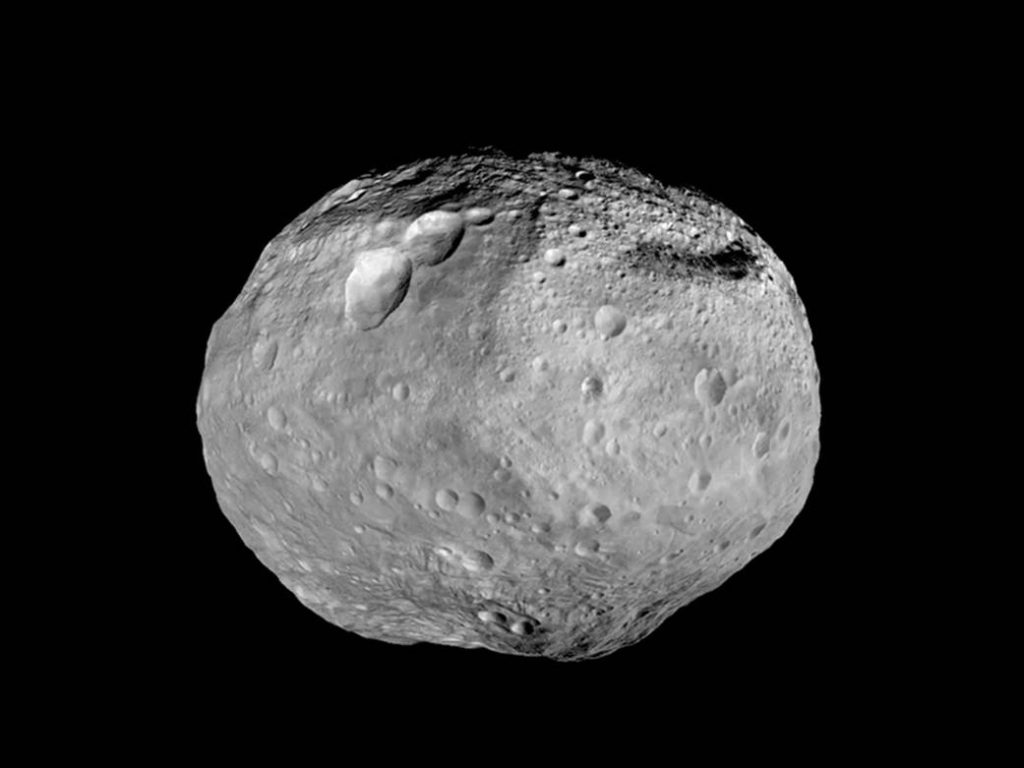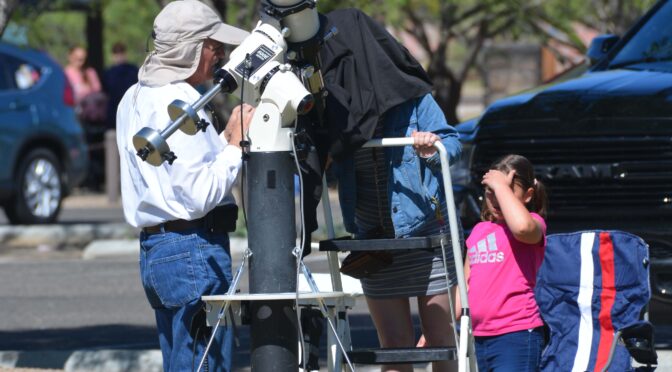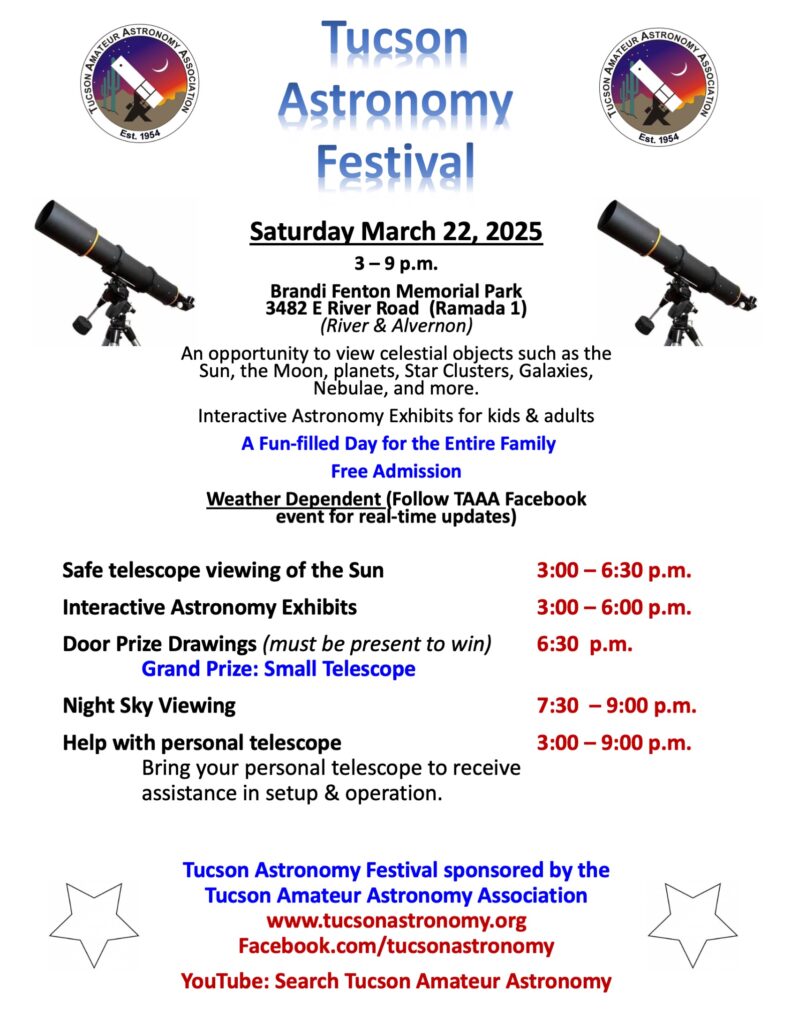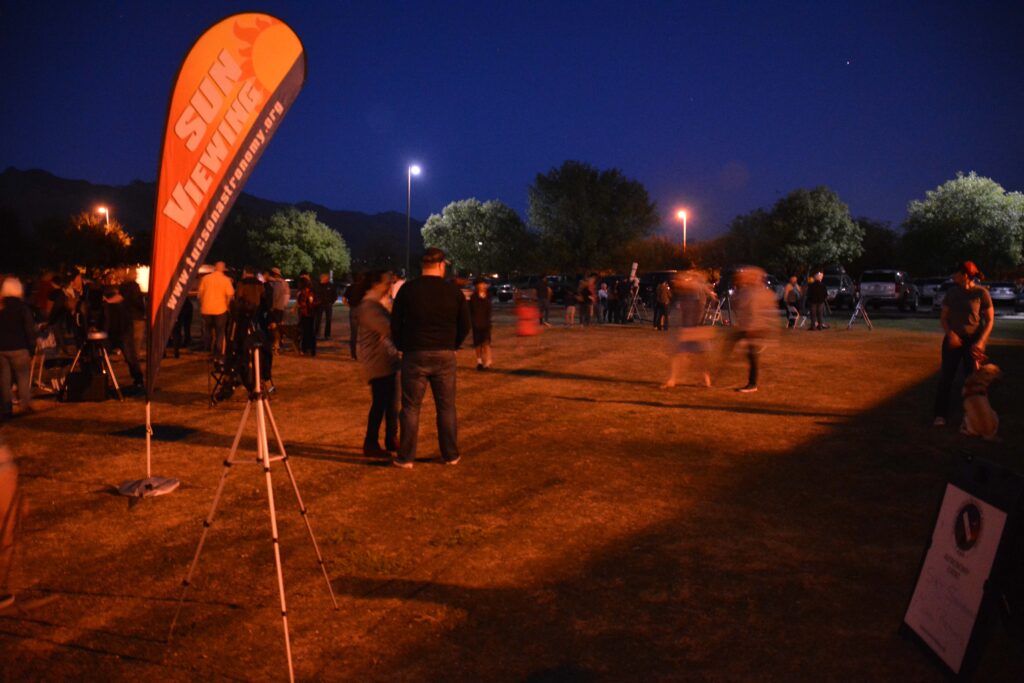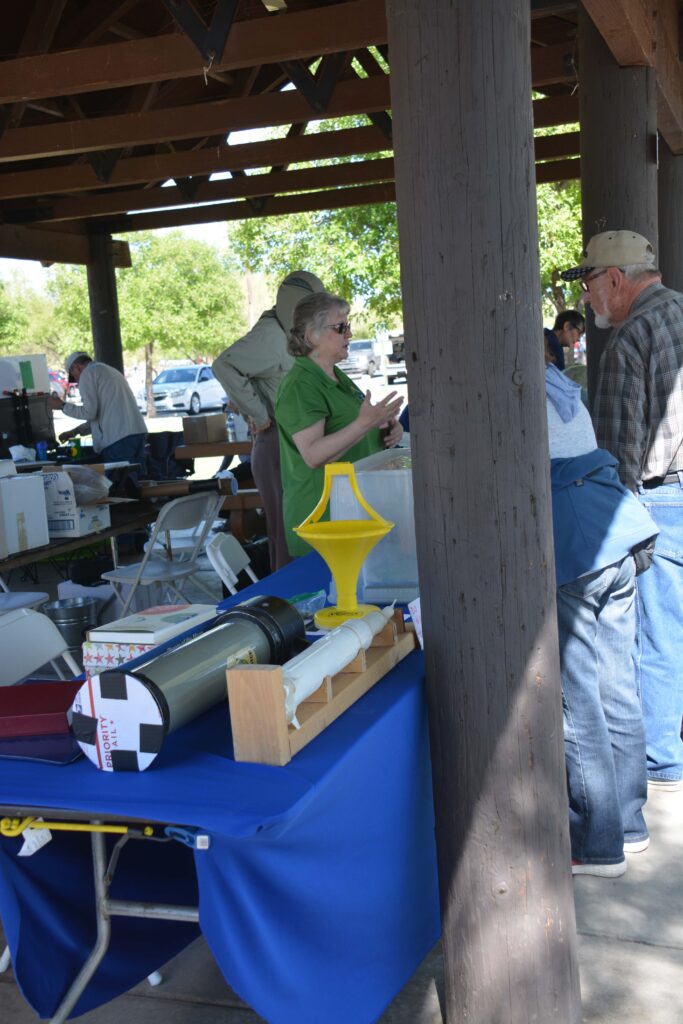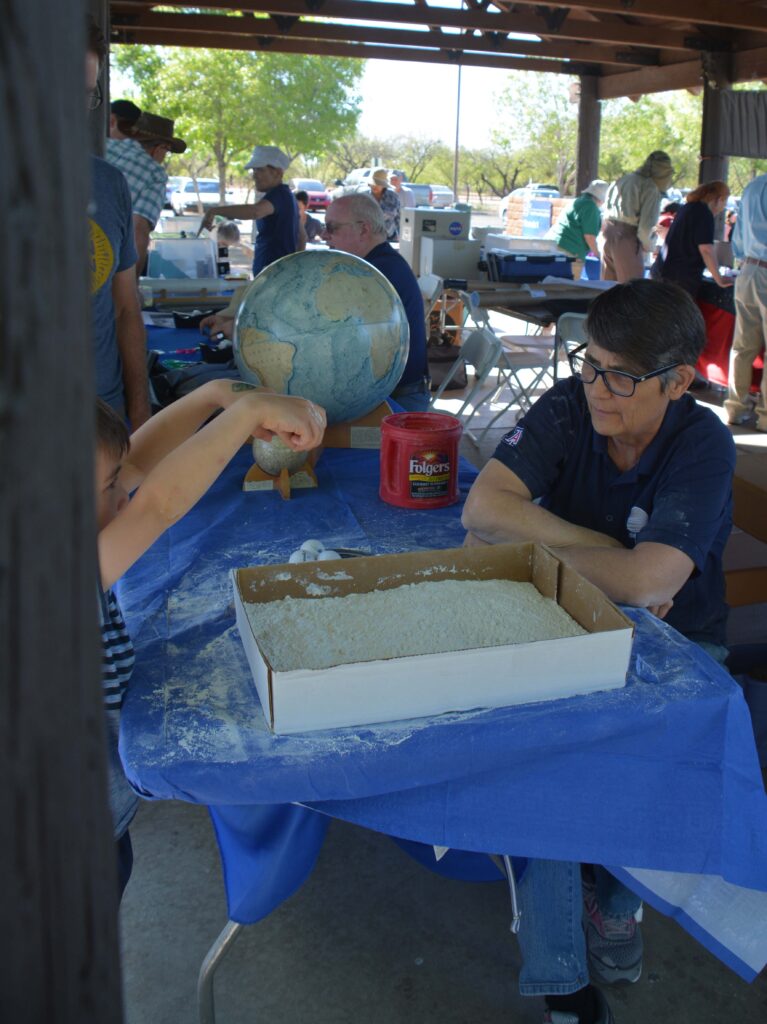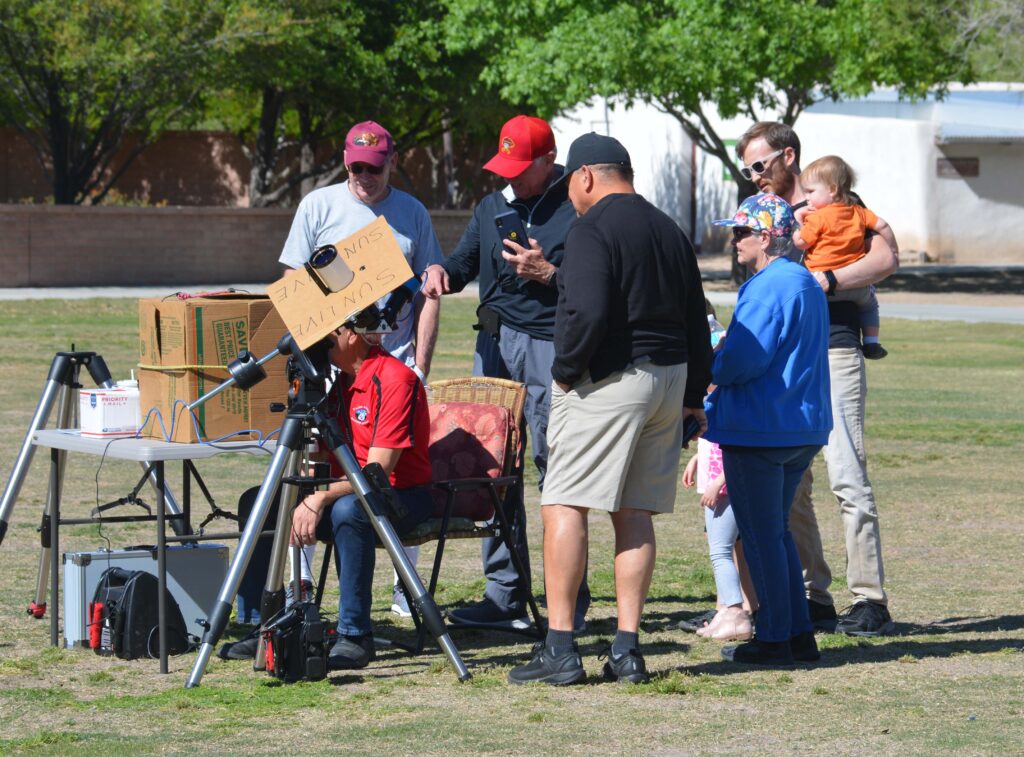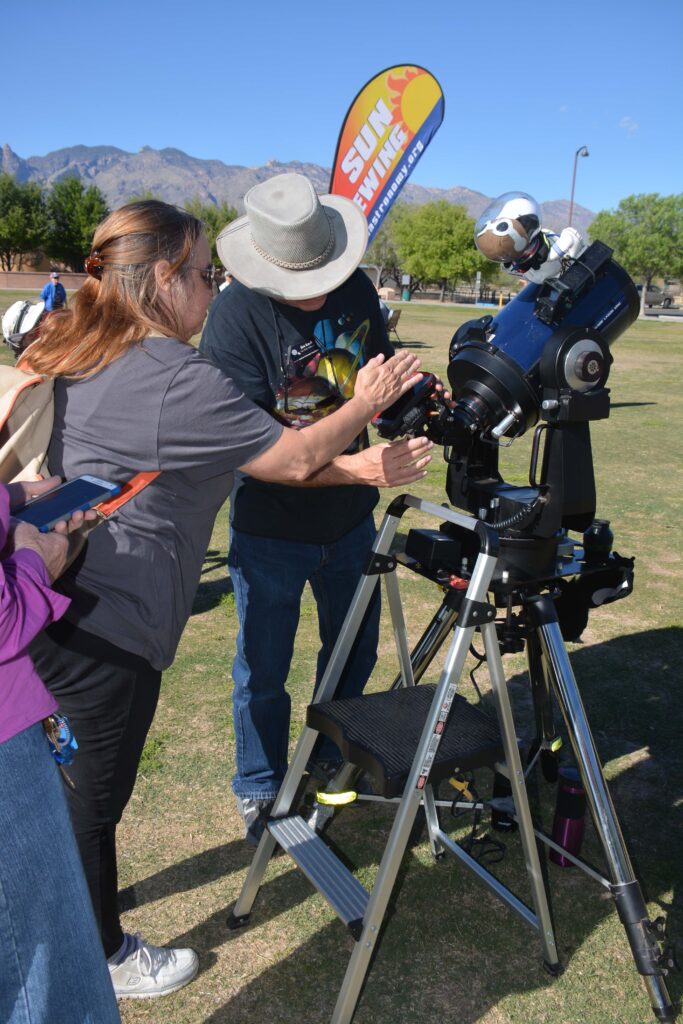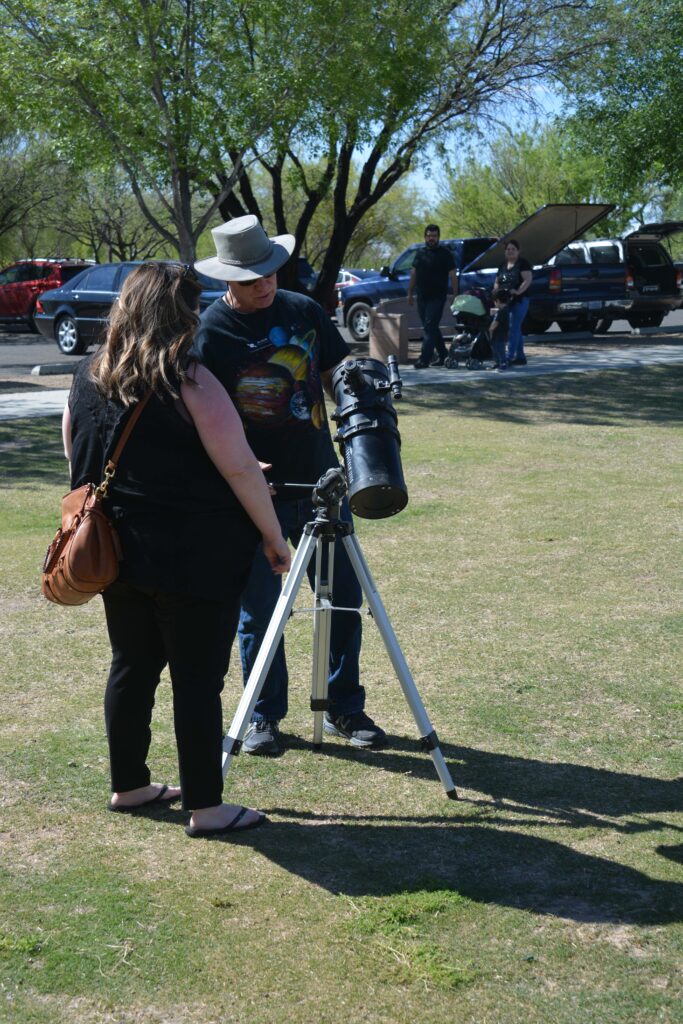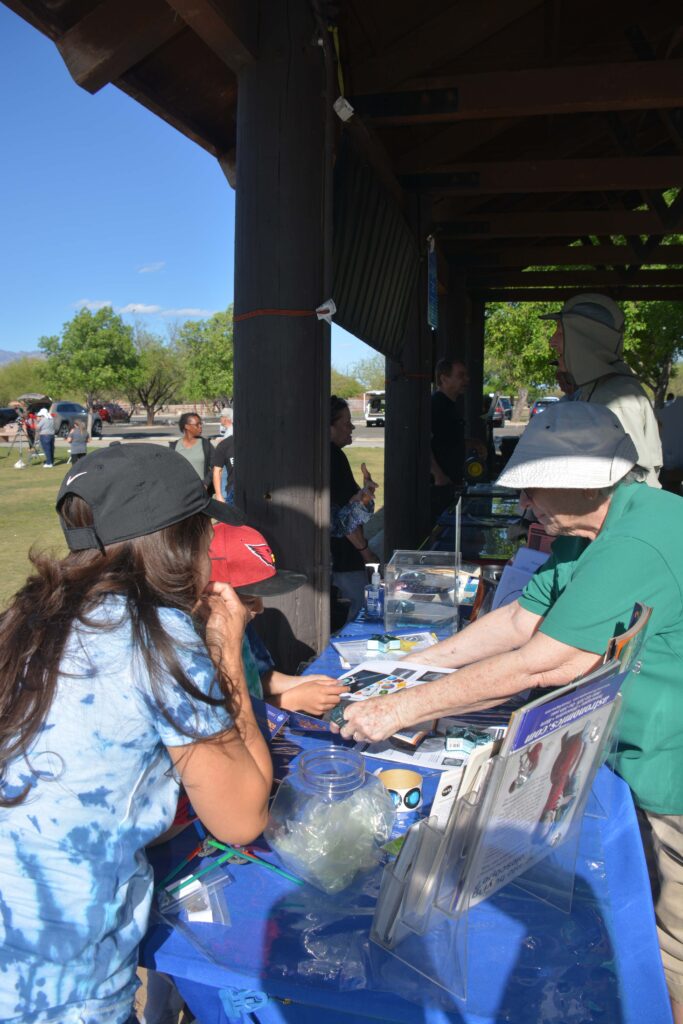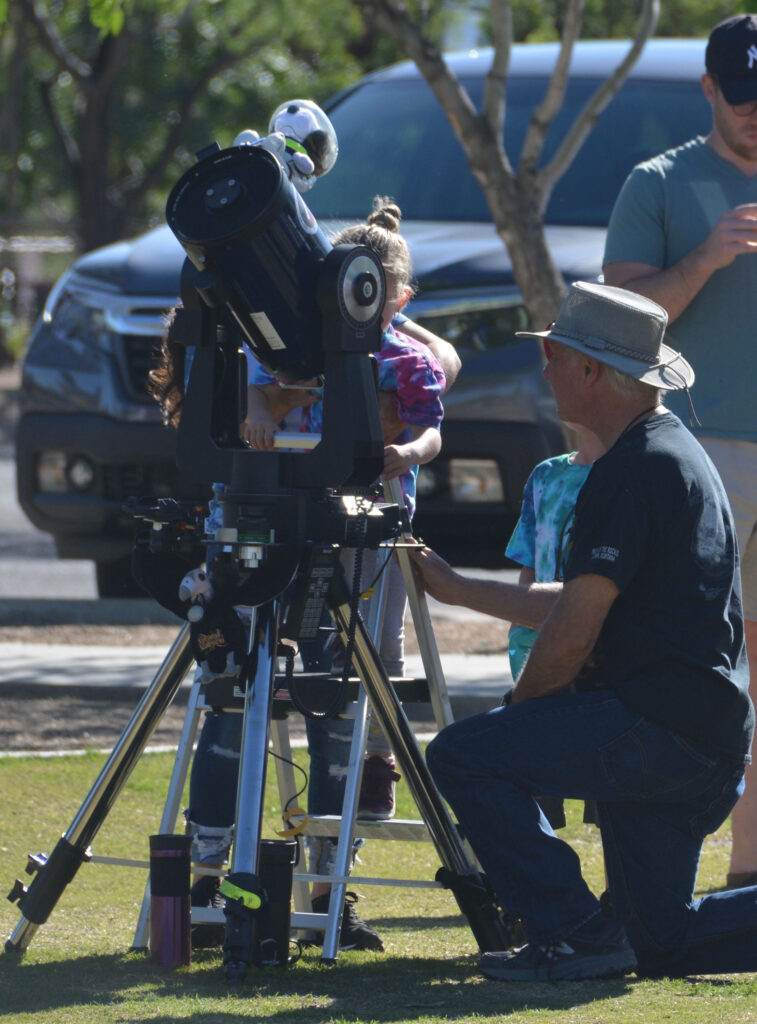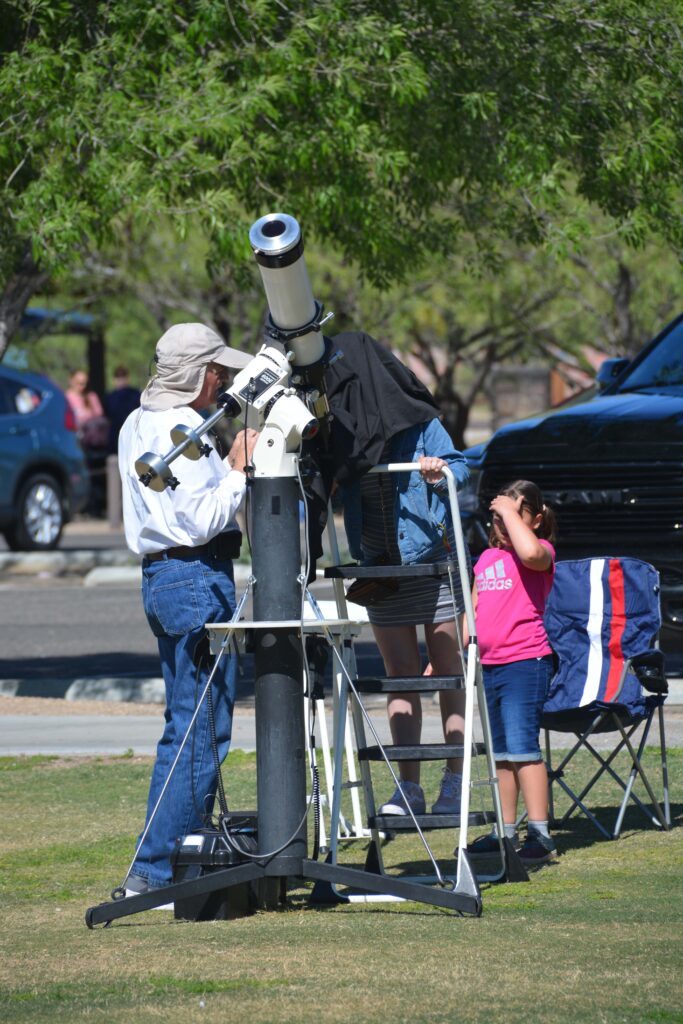March 30
@
1:00 pm
–
3:00 pm
Join the Tucson Amateur Astronomy Association (TAAA) and Saguaro National Park – East for some Sun gazing at the park. We will observe the Sun through telescopes with appropriate filters so you will get to see sunspots, prominences, flares, and more.
The Sun is nearing its peak in the sunspot cycle so there is lots of activity on its surface.
This event is FREE and open to the public, no reservations required. NPS admission fees apply.
The telescopes will be set up at the Bicycle Ramada next to the Visitors Center.
This event will most likely be canceled in the event of clouds/rain.
Bernie Stinger
612-396-8839
astronomy-events@tucsonastronomy.org
March 28
@
7:30 pm
–
9:30 pm
Join TAAA for an evening of stargazing to view amazing solar system and deep sky objects from a truly Dark Sky Park. You will see planets, nebulae, star clusters, double stars, galaxies millions of light years away, and lots more. We will have several telescopes for public viewing.
Observing location will be at the Faraway Ranch parking lot just past the entrance gate about 1/2 mile. The event is free of charge, no reservations are required. Please try to use red light flashlights and minimize white light (to include cell phones) that will hinder your night vision.
Chiricahua National Monument website: https://www.nps.gov/chir/index.htm.
Weather dependent — Follow the event on the TAAA Facebook page to get weather and other updates: https://www.facebook.com/TucsonAstronomy/.
Check back here or on our Facebook page closer to the event for any updates.
Bernie Stinger
612-396-8839
astronomy-events@tucsonastronomy.org
March 21
@
7:30 pm
–
9:30 pm
Join TAAA and the National Park Service for an evening of stargazing at Tumacacori National Historical Park . Address below.
The Tucson Amateur Astronomy Association (TAAA) will have several telescopes with operators for astronomical viewing in front of the Old Mission.
We will observe Planets, Nebulae, Galaxies, Star Clusters and lots more. Great opportunity to look through a variety of telescopes.
Event is free, no reservations required, but NPS admission fees apply.
Weather dependent, check back here prior to event for possible updates on day of event.
Bernie Stinger
612-396-8839
astronomy-events@tucsonastronomy.org
March 7
@
7:00 pm
–
9:00 pm
Star Party @ Tucson Mountain Park – Juan Santa Cruz Picnic Area
Tucson, AZ (right next to Sonoran Desert Museum)
Viewing Location: Small side loop on East side of main loop.
Information: Great dark skies in Western Tucson. Star Party open to the Public. Cost: FREE.
Tucson Amateur Astronomy Association will have several telescopes for astronomical viewing. We will observe Planets, Nebulae, Galaxies, Star Clusters and lots more. Great opportunity to look through a variety of telescopes. Weather dependent.
For real-time updates, follow this event on the Tucson Amateur Astronomy Association Facebook Events Page: TAAA Facebook Events page
Event is FREE but REGISTRATION IS REQUIRED. Go to this link to register: https://bit.ly/ticketsEE
These events may fill up early.
Bernie Stinger
612-396-8839
astronomy-events@tucsonastronomy.org
March 1
@
7:00 pm
–
9:00 pm
Star Party – Saguaro National Park – East
3693 S Old Spanish Trail
Tucson, AZ 85730
Great dark skies on the East side of Tucson at Saguaro National Park – East.
Star Party is open to the Public. Event is free, no registration required, but NPS admission fees apply.
The Tucson Amateur Astronomy Association will have several telescopes for astronomical viewing. We will observe Planets, Nebulae, Galaxies, Star Clusters and lots more.
Great opportunity to look through a variety of telescopes.
Weather dependent. For real-time updates, follow this event on the Tucson Amateur Astronomy Association Facebook Events Page: Tucson Amateur Astronomy Association | Facebook
Bernie Stinger
612-396-8839
astronomy-events@tucsonastronomy.org
March 1
@
7:00 pm
–
9:00 pm
Join us at Organ Pipe Cactus National Monument for an evening of stargazing under extremely dark skies at a historic location. Few locations in the U.S. have skies this dark!
TAAA will have volunteer astronomers with Telescopes setup and viewing Planets,
Nebulas, Galaxies, Star Clusters and more, under the dark skies of Southern Arizona!
Star Party is free but national park admission fees apply.
Weather dependent. For real-time updates, follow this event on the Tucson Amateur Astronomy Association Facebook Events Page: https://www.facebook.com/TucsonAstronomy/events
Bernie Stinger
612-396-8839
astronomy-events@tucsonastronomy.org
March 22
@
3:00 pm
–
9:00 pm
FREE Family Fun. Join Tucson Amateur Astronomy Association for our annual Tucson Astronomy Festival at Brandi Fenton Memorial Park in Tucson, AZ. We will have safe solar observing of the Sun in the afternoon along with family fun astronomy activities for the kids and the entire family. During the evening, we will have nighttime telescopes to observe the wonderful universe we live in. There will be a raffle around 6:30 pm of lots of fun astronomy items with the grand prize being a telescope (must be present to win). If you have your own telescope and want some help to learn how to use it, bring it in the afternoon during daylight and we will have volunteers available to help you learn how to use it. Hang around in the evening and get in some practice.
February 13
@
6:30 pm
–
8:00 pm
Main Presentation: Galaxy Classification Part 2
Presenter: Connor Justice
This month, Connor Justice will be presenting Galaxy Classification Part 2.






